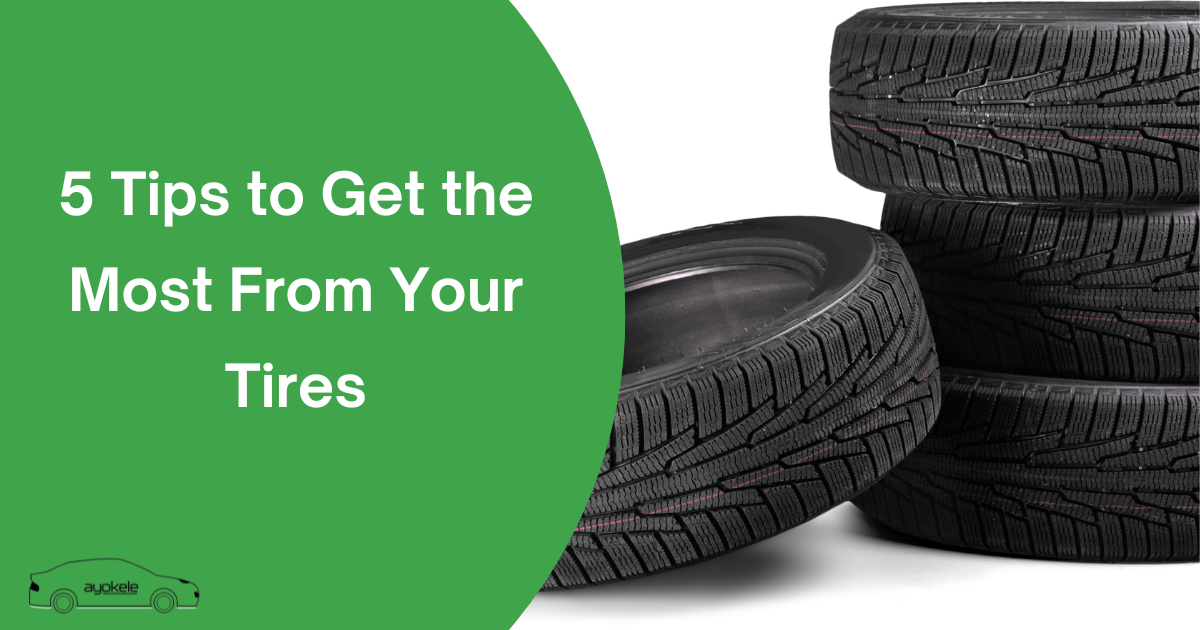Your tires are one of the most crucial components of your car, directly impacting your safety, comfort, and the cost of maintenance. With a bit of attention and care, you can extend their lifespan, improve your driving experience, and even save money on fuel and repairs. Here are five essential tips, each explained in detail, to help you maximize the benefits of your tires.
1. Check Tire Pressure Regularly
Maintaining the correct tire pressure is crucial for your car’s performance and your own safety. When tires are underinflated, they create more rolling resistance, which means your engine has to work harder and you end up using more fuel. Under-inflated tires also wear out faster on the edges and can overheat, increasing the risk of a blowout. On the other hand, over-inflated tires wear more quickly in the center and provide less grip, making your ride less comfortable and potentially more dangerous, especially on wet or uneven roads.
To get the most from your tires, check the pressure at least once a month and before any long journey. Use a reliable tire pressure gauge and compare the readings to the recommended levels found in your car’s manual or on the sticker inside the driver’s door. Remember that tire pressure can change with temperature, so it’s best to check when the tires are cold. Keeping your tires at the right pressure not only extends their life but also improves your car’s handling and braking.
2. Rotate Your Tires
Tire rotation is a simple yet often overlooked maintenance step that can significantly impact the lifespan of your tires. Because the front and rear tires wear differently, front tires usually wear faster due to steering and braking forces—rotating them ensures that all four tires wear more evenly. This helps you avoid having to replace two tires much sooner than the others, keeping your car balanced and predictable on the road.
It’s generally recommended to rotate your tires every 8,000 to 10,000 kilometers, or as specified in your vehicle’s manual. Some service centers will rotate your tires as part of routine maintenance; however, it’s always a good idea to ask. Regular rotation not only extends tire life but also helps maintain even traction and stability, which is especially important in wet or slippery conditions.
3. Balance and Align Your Wheels
Wheel balancing and alignment are two services that can significantly impact your tires’ lifespan and driving comfort. When your wheels are out of balance, you might feel vibrations at certain speeds, and your tires can develop uneven wear patterns. Balancing involves adding small weights to the wheel to ensure it spins smoothly, which reduces vibration and helps your tires wear evenly.
Alignment, on the other hand, refers to adjusting the angles of your wheels so they are set to the manufacturer’s specifications. Poor alignment can cause your car to pull to one side, make your steering wheel off-center, and lead to rapid or uneven tire wear. If you hit a pothole or curb, or if you notice your car isn’t tracking straight, it’s a good idea to have your alignment checked. Regular balancing and alignment not only protect your tires but also improve your car’s handling and fuel efficiency.
4. Inspect Tires for Damage and Tread Wear
Regularly inspecting your tires is one of the simplest ways to catch problems before they become serious. Look for visible damage such as cuts, punctures, bulges, or objects stuck in the tread. Even small issues can lead to bigger problems if left unchecked, such as a slow leak developing into a flat tire or a bulge escalating into a blowout at high speed. Early detection means you can repair or replace a tire before it fails, leaving you stranded.
Tread wear is another critical factor. Tires with worn-out tread have reduced grip, especially in wet conditions, which increases your risk of skidding or hydroplaning. Use a tread depth gauge or the “coin test” to check if your tires have sufficient tread depth—most experts recommend replacing tires when the tread depth is below 2mm.
5. Drive Smoothly and Avoid Hazards
The way you drive has a big impact on how long your tires last. Aggressive driving habits, such as hard braking, rapid acceleration, and sharp cornering, put extra stress on your tires, causing them to wear out much faster. Smooth, gentle driving not only extends tire life but also improves your car’s fuel efficiency, making your journeys more comfortable.
It’s also important to avoid road hazards whenever possible. Potholes, debris, and rough roads can cause immediate damage to your tires or lead to slow, uneven wear over time. If you can’t avoid a pothole, slow down as much as possible before hitting it.




